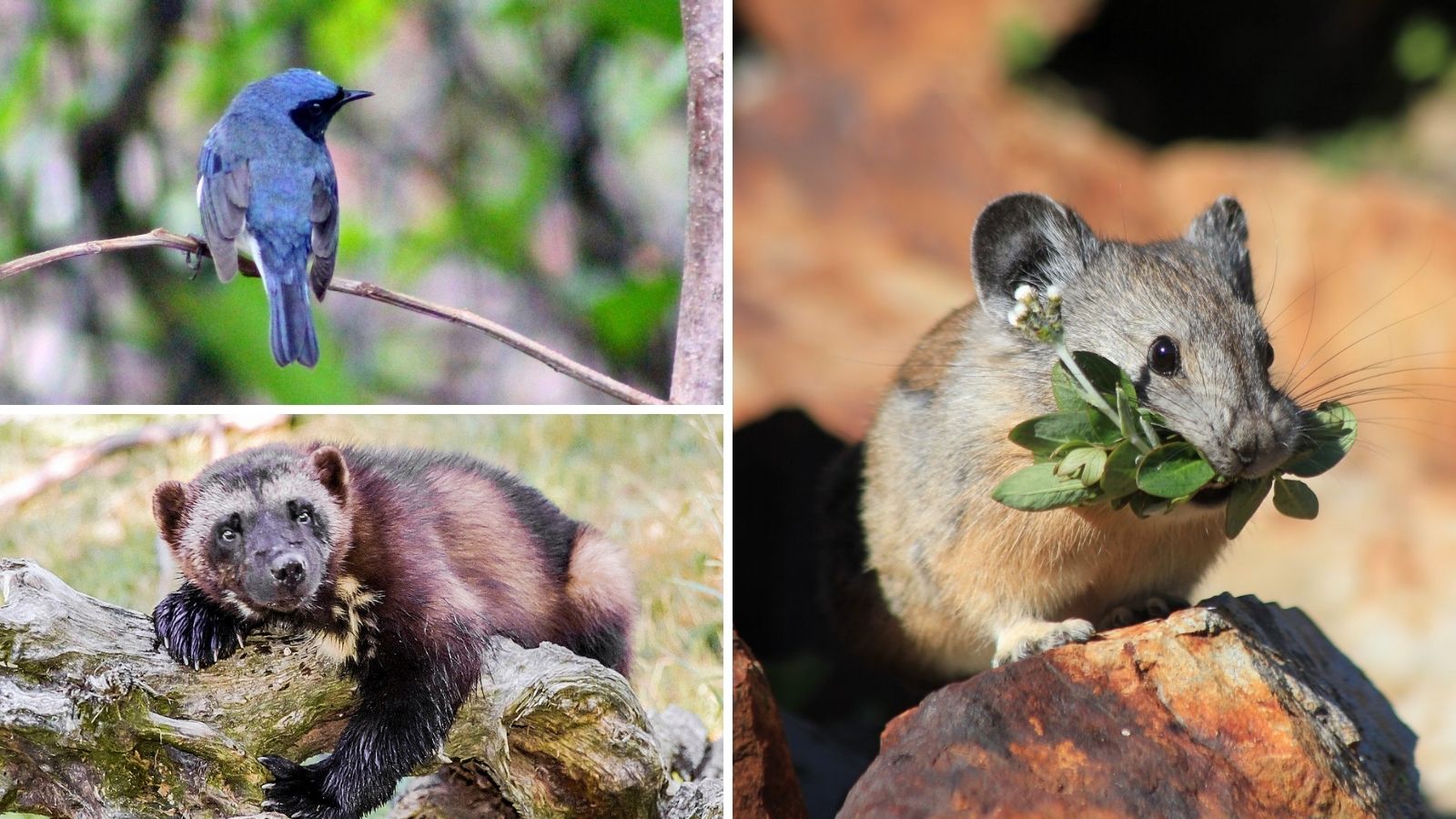We have much more to do and your continued support is needed now more than ever.
What President Biden’s New Climate Goals Mean for Wildlife & Communities

Impacts Seen and Unseen
Climate change has impacted wildlife and humans—especially frontline communities that disproportionately experience the harms dealt from climate change globally and domestically. In North America, there are countless wildlife species that are affected in yet unseen ways (or ways we don’t fully understand) by the changes in climate stemming from human activity. Many people are alert to the troubles facing popular and easily recognizable animal superstars like turtles and polar bears—and while they deserve awareness, the truth is that climate change will likely affect most, if not all, species on Earth.
The black-throated blue warbler is an example of the “canary in the coal mine” so to speak. Though there is no observed direct link between this small songbird and climate change, researchers have noticed that its migration patterns are shifting in conjunction with environmental conditions triggered by climate change (not unlike human climate refugees that flee from their uninhabitable regions to live in a more stable environment).
Wolverine and pika populations face an uncertain future as warming trends reduce essential habitat that these species rely on—potentially leading to smaller and more isolated populations over time. These are just a few examples of wildlife impacts that will likely continue to be observed in more and more species as scientists uncover the ravages of climate change.
2017 was a particularly harsh year for climate impacts: It was the deadliest year for wildfires, global sea levels hit a new record high, and polar ice caps were (and still are!) melting at an ever-increasing rate—putting sea-ice dependent organisms like walruses at greater risk. 2017 also happened to be the same year that former President Trump announced his intention to withdraw the U.S. from the Paris Agreement, which is a landmark global effort to reduce greenhouse gas emissions and combat climate change.
Despite the previous administration’s resistance to address the growing climate crisis, states, localities, and other Parties that ratified the Paris Agreement spoke out in support of climate mitigation, demonstrating that they were still committed to working towards a cleaner future. The U.S. officially withdrew from the Agreement in late 2020.
But President Biden has different plans for America, its wildlife, and its people. Climate change is an issue that doesn’t just affect one or two areas—it takes a hit on species populations and biodiversity, causes chronic harm to human health, decreases crop yield, lowers air and water quality, triggers more intense weather and natural disasters, increases prevalence and geographic occurrence of diseases—the list goes on.
And climate change doesn’t just affect the U.S. Many will recall the intense fires that blazed through the Amazon rainforest and Indonesia in 2019. President Biden understands the urgency of the global climate crisis, and reintegrated the U.S. into the Paris Agreement earlier this year.
A Nationally Determined Contribution
President Biden recently announced a new 2030 Nationally Determined Contribution for the U.S. A Nationally Determined Contribution, or NDC, is the backbone of the Paris Agreement—each Party or country develops a NDC which proposes how that Party plans to reduce their overall emissions in order to reach the long-term goal of limiting global warming to 1.5 to 2 degrees C above pre-industrial levels. The new NDC aims to reduce U.S. greenhouse gas emissions by 50-52% of 2005 levels by 2030 – which is quite an aggressive goal, but much needed. It nearly doubles the Obama Administration’s 26-28% reduction goal.
The new NDC target is attainable if the administration uses all the tools that are right in its back pocket. This includes investments in electric vehicles, clean energy tax credits, modernizing our grid, clean manufacturing, carbon capture, utilization, and storage, and much more. Everyday, bills that uplift these systemic changes are introduced into Congress—so the frameworks are already in place for NDC compliance.
Natural climate solutions, which go beyond renewable energy and electric cars, are also an underrated mechanism that states and localities can implement to aid in carbon sequestration—they are an essential tool in achieving the 50% emissions reduction goal.
They are strategies that support the ability of natural systems to mitigate climate change, but they can also lessen and protect the natural and built environment from the detrimental impacts of climate change. Investing in conserving and restoring coastal ecosystems, for example, helps avoid shoreline erosion from tidal surges, which protects coastal communities.

Urban trees are another great example of a natural climate solution—they can help mitigate flood risk, reduce urban heat and residential energy costs, and remove pollutants from the air. Large-scale projects like degraded land reclamation and wetland restoration have huge potential to remove and store substantial amounts of carbon, boost local economies, and rehabilitate wildlife habitats that once supported a vast array of animals and vegetation.
While it is exciting for the U.S. to rejoin the Paris Agreement and collaborate with global partners to reduce greenhouse gas emissions, it is important to acknowledge the leadership that states and other countries have shown in their commitment to fighting climate change in the absence of U.S. participation. In November 2021, the United Nations will hold a climate summit in Glasgow where countries will discuss and negotiate their climate goals for the coming decade.
Ask federal lawmakers to treat the climate crisis with due urgency and invest in natural climate solutions!
Take Action!




















